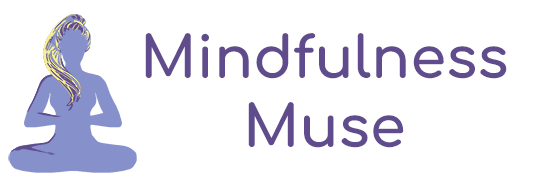Identify Cognitive Fusion

“Worry often gives a small thing a big shadow.” – Swedish Proverb
Cognitive fusion takes hold when we become so attached to patterns of thinking or specific thoughts that they get in the way of leading a full, rich, and meaningful life. In order words, we are fused to our thoughts when they cause significant distress and struggle. When thoughts become paralyzing, it is hard to remember the true nature of thoughts… they are nothing more than words and images floating through our minds to which we ascribe meaning. We are the ones who decide what those thoughts mean, not the thoughts themselves.
Identify Cognitive Fusion
Harris (2009) provides 6 key areas to watch for fusion in your life:
(1) Rules
What unspoken rules do you live by? What stories have you told yourself about how you are “supposed” to feel, think, and behave? Consider the origins of those rules. Where did you learn that it was important to be a “certain” way? What would be the worst case scenario if you no longer followed those rules? How would your life become different if you were freed of those rules?
Example: “If I feel ….., then I can’t do …..” or “If I do ….., then you should do …..”
(2) Reasons
What explanations do you give yourself (and others) about why you can’t, shouldn’t, or won’t do certain things? As human beings, we are very skilled in convincing ourselves and other people of all the reasons why we “can’t” change. Rather than blindly assume the validity of these reasons, choose to mindfully reflect upon them. Are they really “true?” How do you know?
Example: “I can’t do ….. because I feel too …..” or “I’ve never been able to do ….. because I’m just …..”
(3) Judgments
We are creatures of judgment. The judgments we make about people, events, thoughts, feelings, and behaviors inform our decision-making process in many ways. We come to understand the world and make sense of it all through the judgments we make about the people and things in it. Choose to examine what judgments you make and take the time to reflect upon where they come from and how useful they are in helping you life the live you wish to live. Judgments don’t have to cause you to suffer and struggle. Choose to hold them lightly and be flexible to change as new information enters your life.
Example: “I’m a ….. person” or “Anxiety is awful” or “You’re mean” or “Life is hard”
(4) Past
The past is gone. While there are lessons to be learned from what has happened in the past so that you can build a better future, it does you no good to “stay stuck” in the past. Living in the past is like driving a car while looking in the rear view mirror rather than out the windshield. It is choosing to be blind to the present moment and stay fused with and focused on what is behind you. Begin to let go of the past and check back in to the constantly evolving present moment of “now.”
Example: Reliving the “good old days” before life turned “bad” or Taking a trip down “memory lane” where the “grass was greener”
(5) Future
The future is yet to come. We are all living in the present moment. You might as well make the choice to “check-in” to the present moment. When you fixate and fuse with thoughts about the future, you are preventing yourself from taking workable action in the present that will ultimately take you to the places you wish to go in the future.
Example: Worrying and fretting over what “might happen” or Checking out of the present moment by fantasizing about a “better life”
(6) Self
We all have ideas in our minds about what kind of person we are and what we stand for in life. It is valuable to have a strong sense of who you are and what your values are so that you can build a purposeful and intentional life. However, it becomes harmful when you are so fused with your “idea” of yourself that you become rigid and inflexible in your ways of thinking. Begin to mindfully observe your thoughts about “what kind of a person” you are and notice how fusion to those thoughts gets in the way of you stepping out of problematic patterns of behavior. When you let go of who you think you are or who you have to be, you open yourself up to the possibilities of who you can be.
Example: “I am weak/unlovable/worthless” or “I don’t need help” or “I am depressed” or “I’m just not good at …..”
How does your own pattern of cognitive fusion get in the way of you leading your optimal life? Thoughts do not have any inherent power over you unless you hand it over. When you consider the true nature of thoughts as words and images floating through your mind, it seems awfully silly to give them the power to cause you suffering. Make the choice to become more mindfully aware of your patterns of thinking and begin to step out of your old rigid patterns and open yourself up new ways of thinking.
– – – – – – – – – – – – – – – – – – – – – – – – – – – – – – – – – – – – – – – – – – – – – – – – – – – – – – – – – – – – – – – – –
Harris, R. (2009). ACT made simple. Oakland, CA: New Harbinger Publications, Inc.
Featured image: Can someone remove the knot on my neck? by Tambako the Jaguar / CC BY-ND 2.0

What are your impressions of Jordan Peterson, his message and some of the new more aggressive doctrine masculinity groups.